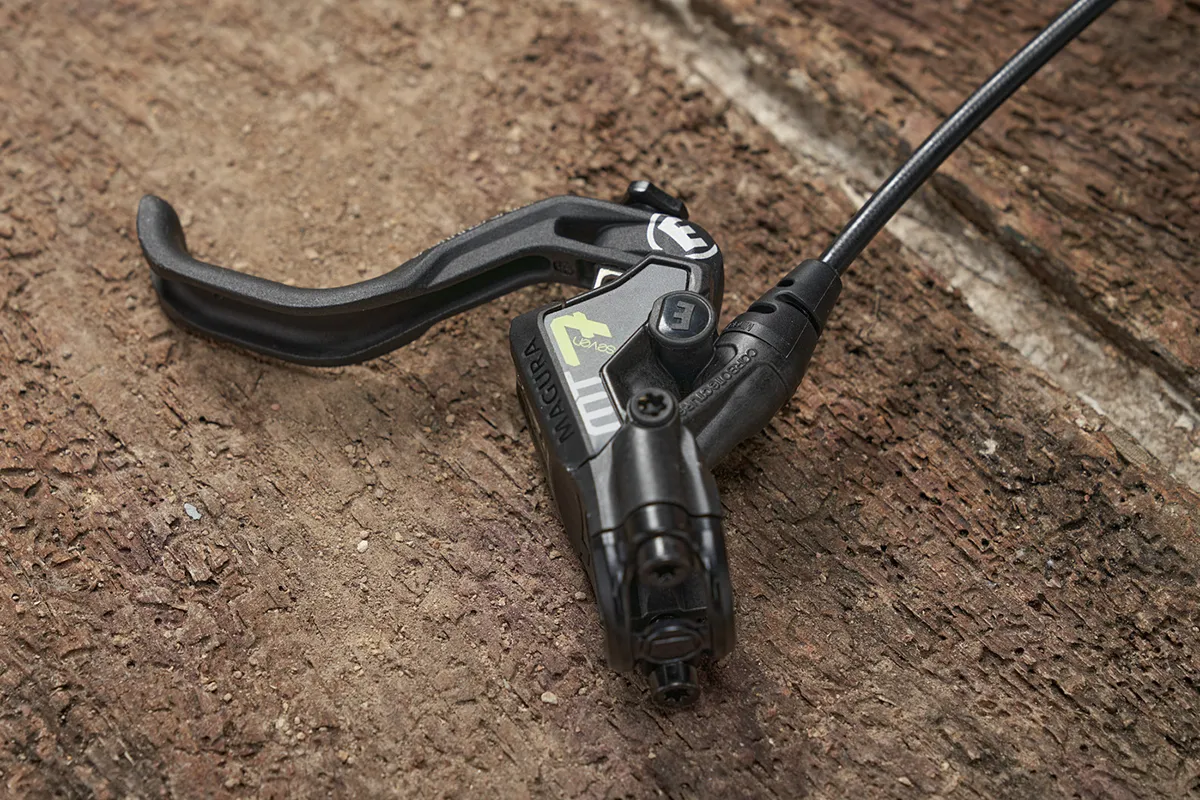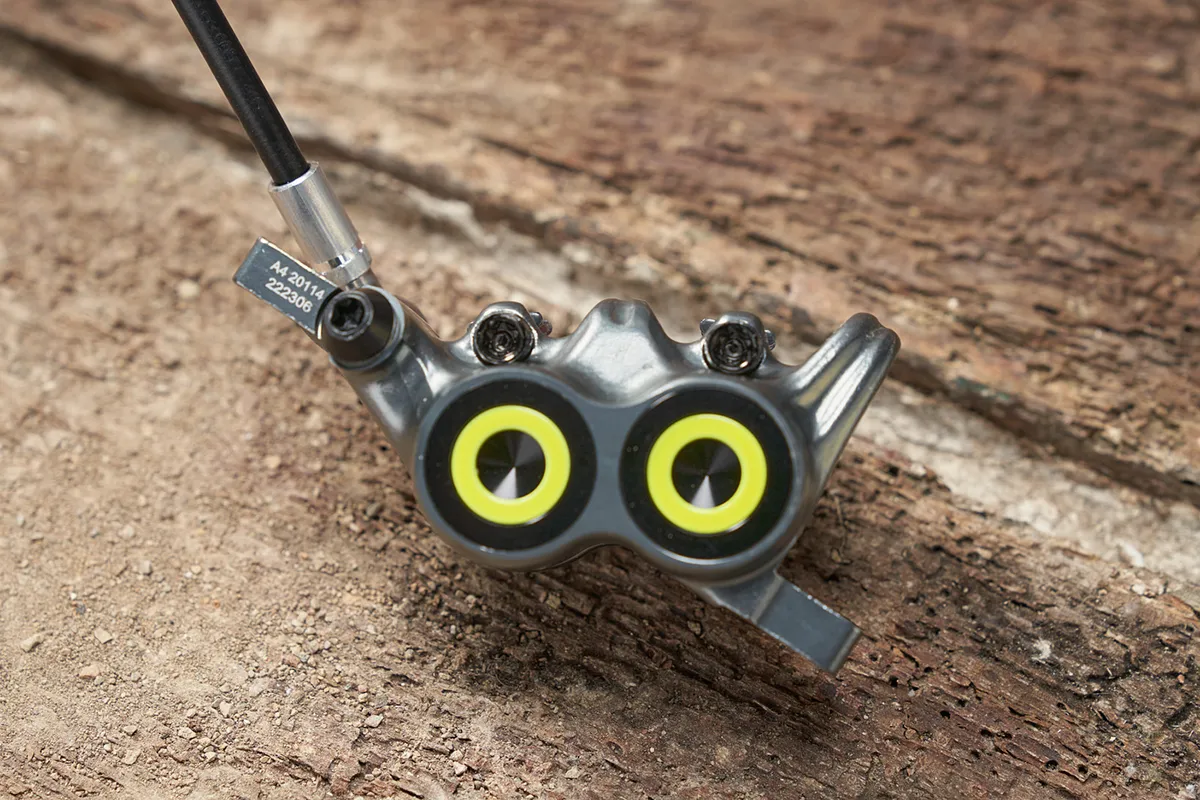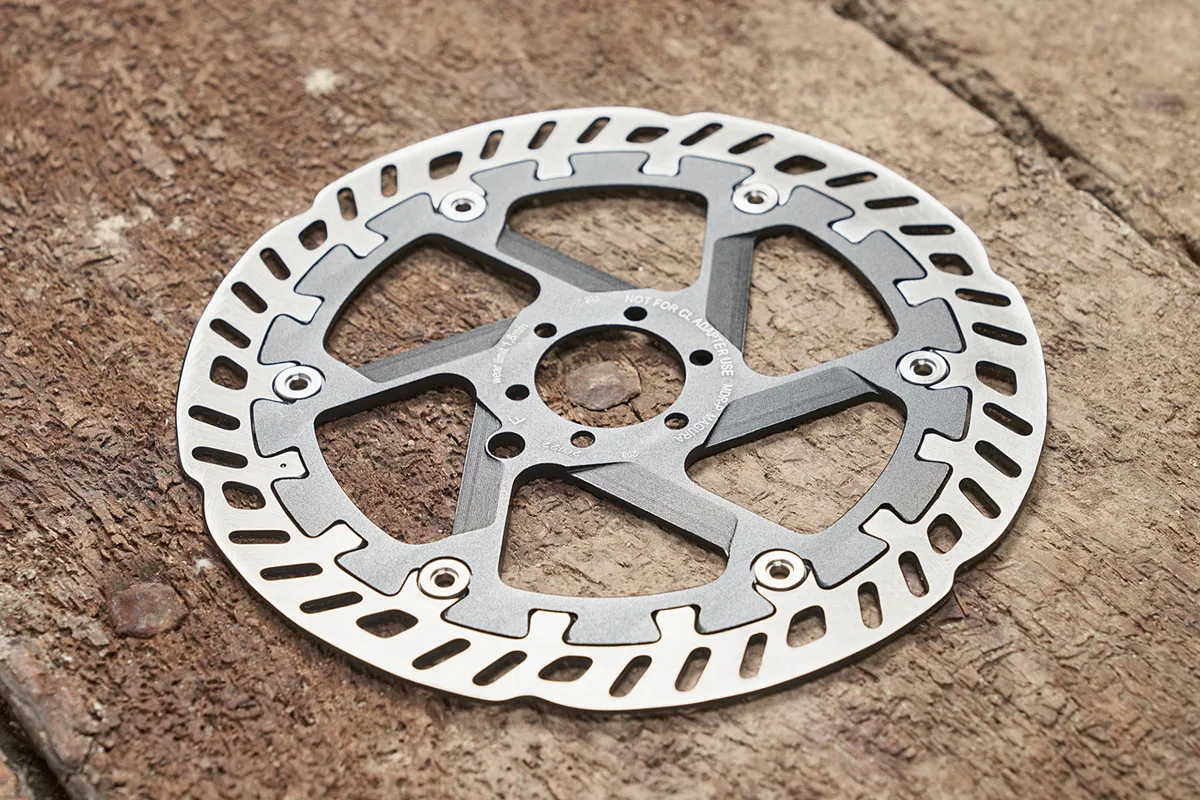Being downhiller Loïc Bruni’s brake of choice, there's clearly plenty of power on offer from the Magura MT7 Pro.
Magura’s brakes have an enviable reputation for their power, as well as their customisation options, from coloured piston rings to numerous lever shapes.
They also have a wildly different feel to many brakes, with huge amounts of lever movement once the pads are engaged. So how do these powerful MT7 Pro brakes stack up?
Magura MT7 Pro brakes specification

The flip-flop lever body, that can work on either side of the bar, has a relatively unusual appearance (although Hope’s XCR lightweight brake looks similar), with a radial master cylinder design, which is said to reduce friction and aid modulation.
The body of the lever is constructed from Magura’s ‘Carbotecture SL’ material, effectively a carbon composite, which helps keep weight low and is claimed to be "extremely resistant", presumably to damage.
The body attaches to the bar with a split clamp and two wide-pitch screws. Perhaps it’s a function of this, and the composite material they screw in to, but tightening these bolts always feels as though you’re cross-threading because the threads are stiff to turn.
I’ve also found the edges of the clamp area quite sharp, so avoid over-tightening on carbon bars. It’s not a particularly refined-feeling clamp, overall.
The lever has a highly kinked form (though other lever blades are available). It’s quite short, but is comfortable to pull.
The reach is adjustable via a tool-free dial on the outside of the brake lever’s pivot, however adjusting it closer to the bars risks the lever contacting the grip before full power is reached, and so the full extent of the lever reach adjustment isn’t always on offer.
Likewise, middle fingers can get trapped if your hand’s ergonomics are as such.

Aftermarket ‘Shift Mix’ and ‘Remote Mix’ shifter and dropper mounting options are offered, plus a lever with bite-point adjustment is available.
The one-piece, forged aluminium caliper holds four individual pads over the four pistons, held back from the rotor by magnets on the pistons rather than a traditional spring. The one-piece design is said to improve the caliper’s rigidity.
The hose leaves the caliper via an angle-adjustable banjo, to aid hose routing on your frame. The hoses are very long, so there are unlikely to be bikes the brakes can’t be fitted to. They use Magura’s ‘Royal Blood’ mineral oil.
The bleed process is very easy to follow, pushing and pulling the fluid through via a syringe screwed into the caliper’s bleed port, and collecting it in an open syringe on the lever. Over the years, I’ve had mixed success, occasionally finding it hard to purge all the bubbles from the caliper.
I tested the brakes with Magura’s thick MDR-P rotors. Their braking surface floats on an alloy carrier, said to help with heat and warping resistance.
Magura MT7 Pro brakes performance

The brakes bed in relatively quickly with their standard sintered pads. Lever throw, pre-bite, is moderate with the factory bleed. The lever itself feels sprung, and has a slightly odd-feeling clunk as it returns to neutral – though on the trail you’re unlikely to feel this.
The pad contact moment isn’t quite as obvious as some brakes, with the bite a little muted. This continues into a soft (or mushy as some might say) overall lever feel with the factory bleed.
I bled the brakes after the bedding-in period and the system felt better – less lever squidge, a more positive bite and slightly less overall lever travel. I would recommend bleeding your brakes from new (especially after shortening the hoses) to ensure optimal performance.
When bled, there’s still more lever stroke than most brakes, and this relates to the incredible levels of power control and modulation through the brake lever.
If you like modulation and progressive power, these brakes will likely feel great. However, if you’re used to the punchy nature of, say, a Shimano XT M8120 brake, you may find the level of lever movement during braking harder to get used to.
I also found the lever body itself quite flexible, noticeably flexing as I fully squeezed the lever, contributing to that less-sharp feel.
What’s clear, though, is the power on offer is outstanding. Progressive in nature, it grows gently from slightly underwhelming beginnings.
Pull through to the end of the lever’s stroke, and you’re rewarded with exceptional levels of braking. It’s entirely controllable throughout too.
During longer-term testing of other MT7 brakes, I’ve had some issues with sticking pistons, compromising lever feel and performance, as well as leading to some pad and rotor rub. I’d advise keeping on top of maintenance to prevent this.
The MDR-P rotors I tested the brakes with are thick and have a floating braking surface. This means they should last a long time, and are more resistant to warping under heat.
However, I found noticeable wheel wobble fore and aft when the brakes were clamped on, thanks to the float between the rotor surface and its carrier, and a little pad movement in the caliper. Fortunately, this didn’t result in any undue vibration or noise during testing.
Magura MT7 Pro brakes bottom line

Magura’s four-piston brakes have ample power ready to be deployed. The application of that power won’t suit every rider, with a softer, malleable lever feel that doesn’t feel particularly snappy.
However, late in the lever’s stroke there’s plenty of punch to bring you to a halt.
I’m not a fan of the lever construction, and found the brakes improved when bled – fortunately this is an easy process.
How we tested
This year, our expert reviewers have tested a selection of the best mountain bike brakes, split into two broad genres.
First, there’s a selection of the most powerful stoppers, aimed at downhill, enduro and electric mountain bike riders. We’ve kitted these brakes out with 200mm rotors front and rear to get the most out of their four-piston calipers and tested them on an e-MTB and our enduro bikes.
The second cohort is targeted at cross-country and downcountry riders, who still need plenty of stopping power without upsetting the scales. These two- and four-piston brakes grab onto 180mm and 160mm rotors in our testing, fitted to our downcountry test rig.
Before hitting the trail, we gave each brake a full going over in our workshop. Hoses were cut to get the brakes fitting neatly and to check out how easily they’re bled at home. We weighed and measured them, making sure no detail was missed.
We lined our levers up against SRAM and Shimano shifters to see which play nicely and weighed up the balance of cost and spec in order to reach our conclusions.
Brakes on test
Product
| Brand | magura |
| Price | 190.00 GBP,269.00 USD |
| Weight | 272.0000, GRAM () - |
Features
| br_brakeType | hydraulic_disc |
| Features | Hose length: 2,150mm / 2,150mm Aimed at: DH / Enduro |
